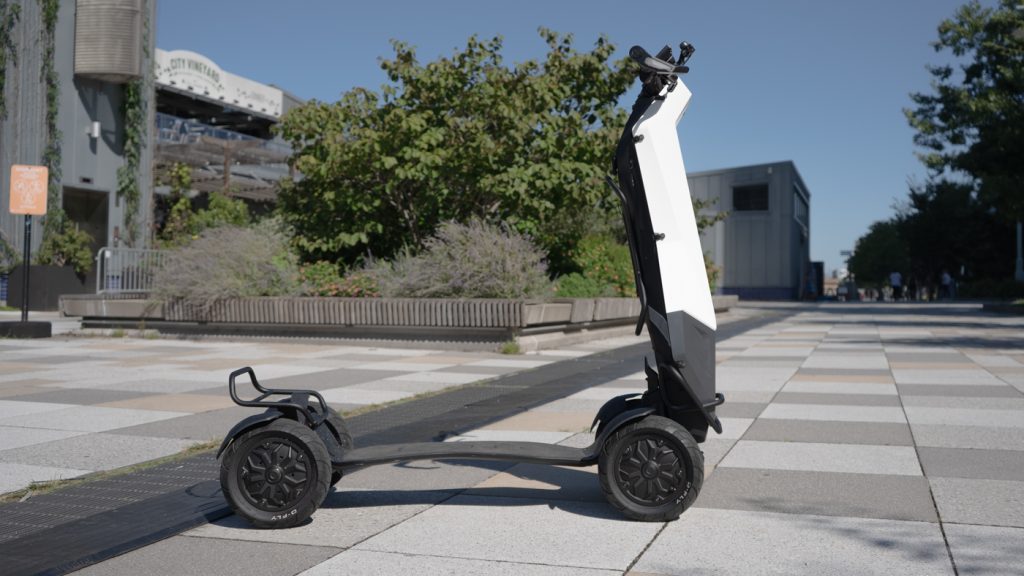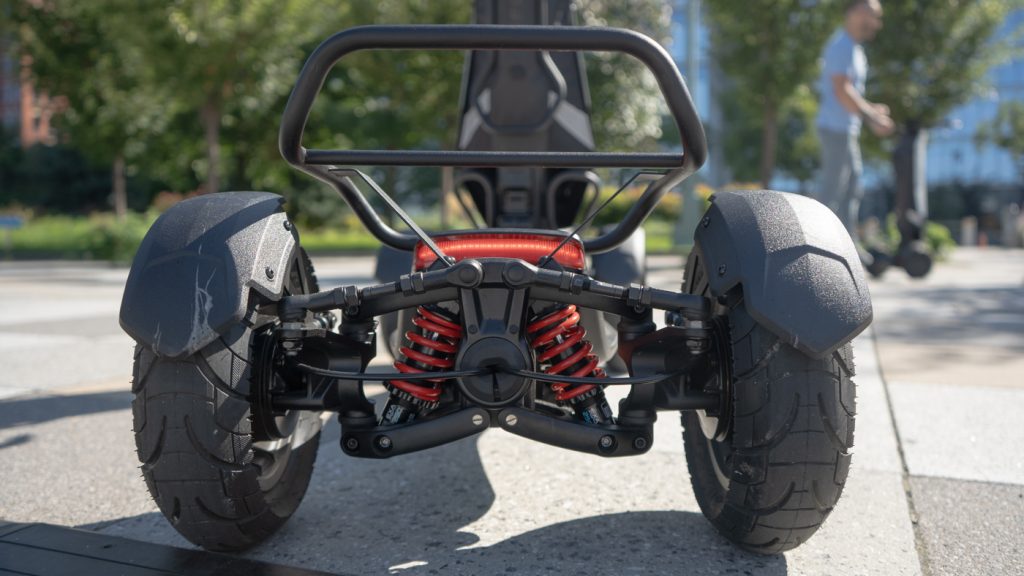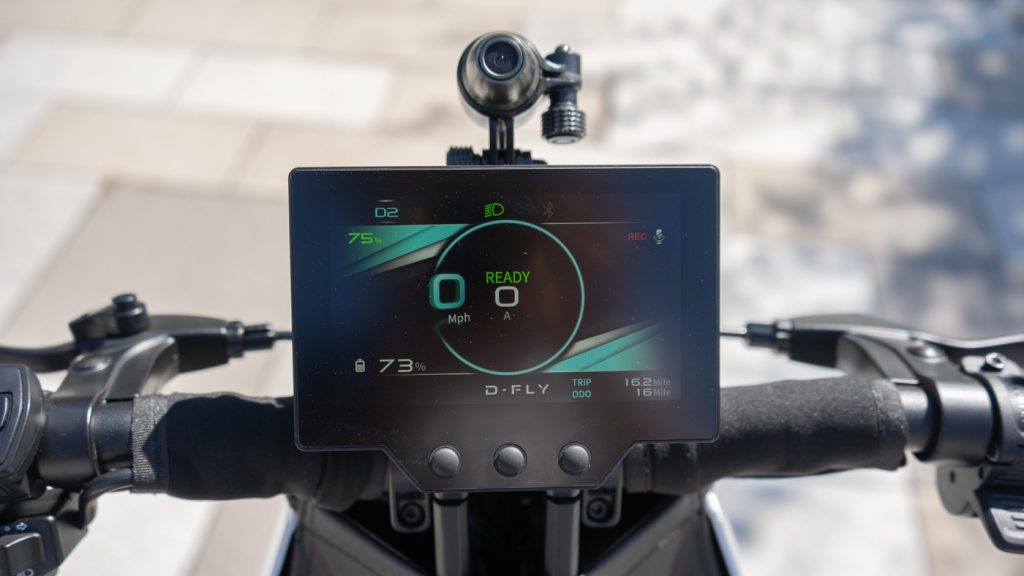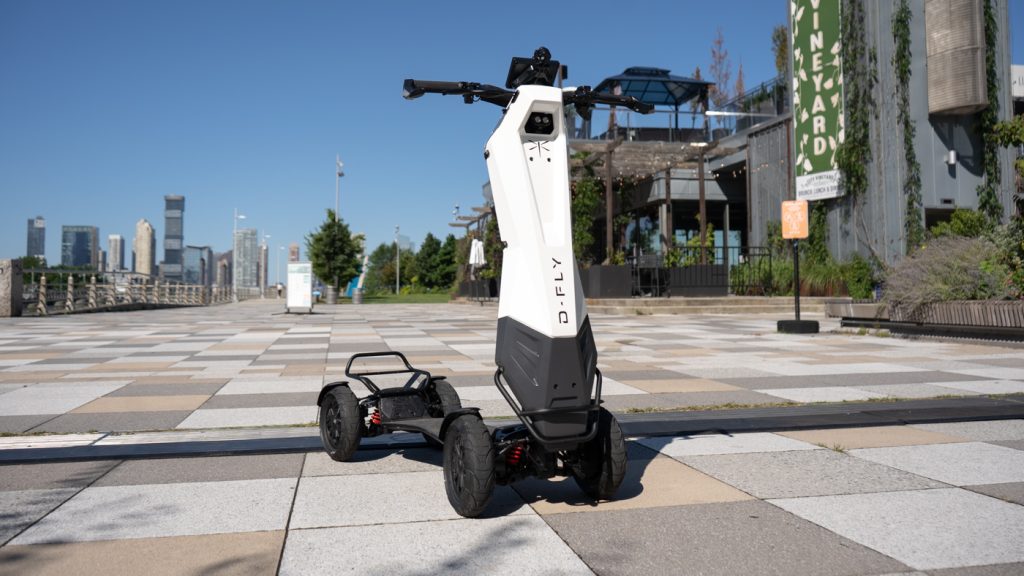
This week, I got to test out something that I didn’t know existed and rode like nothing I’ve ridden before. The Dragonfly from D-fly is an adventure electric vehicle with patented 3-dimensional steering that looks kind of like a 4-wheeled scooter with crazy suspension.
At first, I thought, “Okay, it looks like it could be a really comfortable ride with the beefy suspension and all,” but after riding, I can tell you that it’s not for nothing that the manufacturer refuses to call it a scooter.

Despite its looks, it doesn’t ride like a scooter or a skateboard but rather a surprising mix of everything jumbled together in a new kind of riding that I haven’t experienced before. The Dragonfly has a Full-Tilt steering system that gives it a unique type of maneuvering which, depending on how you handle it, can feel similar to carving on a longboard or maybe snowboarding. The system takes a bit of a learning curve to figure out, but once you start to get the hang of it, it can be a blast for those looking for a much more involved ride.

The learning curve
The system allows you to fully tilt into the side you want to go while also being able to steer with the turn of the bars. I know it sounds confusing, and I can tell you that even after the first 15 minutes on it, I was still confused as to how exactly it works. But after a good half hour, I started to learn just how to go in the direction I wanted to, and from there, I began to have a blast. With an extra dimension of steering comes more complexity, but it also makes for a more dynamic ride.
The Dragonfly wouldn’t be my first go-to vehicle when thinking of simple, convenient point A to point B commuting, but it would definitely be on my mind when looking for something that’s exciting at speeds that won’t get me in trouble.
Dragonfly’s specs
- Motor: Two 500W hub motors in the front
- Top speed: 32 mph max
- Range: Up to 50 miles
- Battery: Lithium-Ion 48V 19.6 Ah
- Charge time: 7 hours
- Max load: 250 lbs
- Weight: 80 lbs
- Suspension: Fully independent dual-wishbone technology with adjustable hydraulic damped sprung suspension
- Brakes: Electric front ABS, rear independent dual-drum brakes, and regenerative up to 10% battery efficiency
- Extras: Patented 3D Full-Tilt Technology
- Price: $3,995.00
Tech
The Dragonfly comes with a few tech features like its 5” digital HMI display, which connects to a camera and can record your rides. While the camera is not as good quality as a GoPro, I imagine it would be useful in case of an accident when needing to prove what happened. Another thing you can do with the display is switch modes and dial in the torque settings, which came in handy when I was still getting used to riding it. One surprising feature on the vehicle was the reverse mode that, while I don’t see it being used a lot, given that they’re usually more useful with heavy vehicles, it was very fun to mess around with.

One thing I would have loved to see is hydraulic brakes rather than drum brakes, especially for riding around in a city like NYC, where cars and people can show up out of nowhere. As for the suspension, I thought it was exceptional. I miss the days of longboarding but can’t help but remember those times where a small pebble or crack would make me go from enjoying a peaceful cruise filled with fun carving one second and kissing the ground the next. The Dragonfly was able to give me that sweet carving experience while not having to worry about the pebbles. It also has a way of getting your mind and body more involved in the ride, even at lower speeds.

Electrek’s take
While the hefty price tag of $3,995.00 does come with plenty of decently high-quality parts and fun features like the unique steering system, it is still a high-priced electric vehicle. If you’re looking for something simple to get you from point A to point B, then the Dragonfly could be a bit overkill. For those looking to ride something new and be more involved with your rides while getting the heart pumping at speeds that won’t leave you in the hospital in the case of a crash, then this could definitely be worth a look.
Author: Steven Delatorre
Source: Electrek



